Research


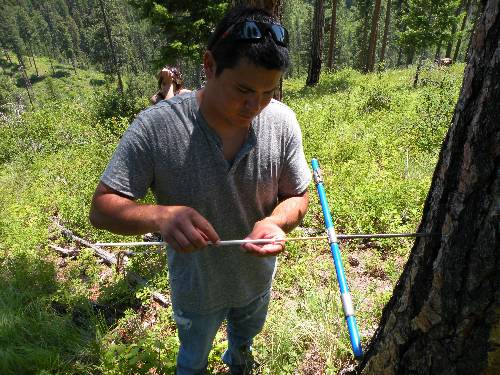
Multi-scale reconstructions of human-climate-fire interactions in mixed-conifer forests of the Northern Rockies
![]() In the northern Rocky Mountains, dry to mesic forests broadly considered to have historically
sustained mixed-severity fire regimes are increasingly targeted for fuel reduction
treatments, despite a lack of information about historical forest conditions, wildfire
dynamics, and the impact of treatments on ecosystem processes in these forests. This
project focuses on understanding how human-climate-vegetation interactions and feedbacks
have shaped mixed-severity fire regimes and how recent land-use and changing climatic
conditions are influencing fire and forest dynamics in the northern Rocky Mountains.
In the northern Rocky Mountains, dry to mesic forests broadly considered to have historically
sustained mixed-severity fire regimes are increasingly targeted for fuel reduction
treatments, despite a lack of information about historical forest conditions, wildfire
dynamics, and the impact of treatments on ecosystem processes in these forests. This
project focuses on understanding how human-climate-vegetation interactions and feedbacks
have shaped mixed-severity fire regimes and how recent land-use and changing climatic
conditions are influencing fire and forest dynamics in the northern Rocky Mountains.
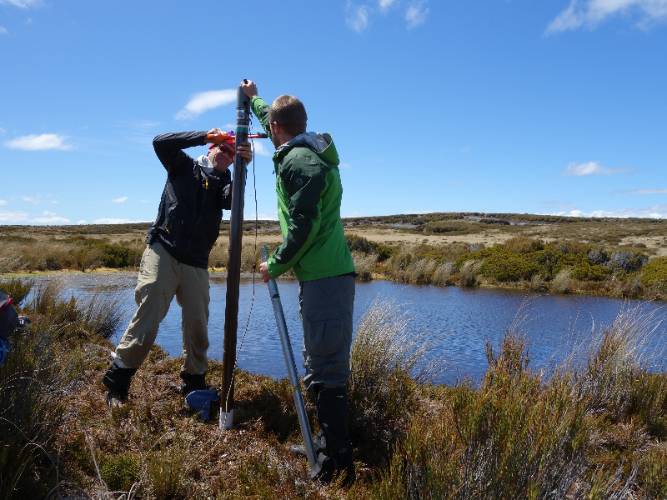
WildFIRE PIRE: Feedbacks and consequences of altered fire regimes in the face of climate and land-use change in Tasmania, New Zealand, and the western U.S.
 WildFIRE:PIRE is an international partnership focused on the causes and consequences
of fire in the past, present, and future. WildFIRE PIRE seeks to advance research
and education on a scientifically important and socially relevant theme: the extent
to which human activities, vegetation change, and climate change interact to alter
fire regimes, ecosystem dynamics and ecosystem services. This project centers on reconstructing
long- and short-term fire dynamics in watersheds where tree-ring data; charcoal, pollen,
and lithologic records from lake-sediment cores; historical land-use and archeologic
records; and modeling results can be compared.
WildFIRE:PIRE is an international partnership focused on the causes and consequences
of fire in the past, present, and future. WildFIRE PIRE seeks to advance research
and education on a scientifically important and socially relevant theme: the extent
to which human activities, vegetation change, and climate change interact to alter
fire regimes, ecosystem dynamics and ecosystem services. This project centers on reconstructing
long- and short-term fire dynamics in watersheds where tree-ring data; charcoal, pollen,
and lithologic records from lake-sediment cores; historical land-use and archeologic
records; and modeling results can be compared.
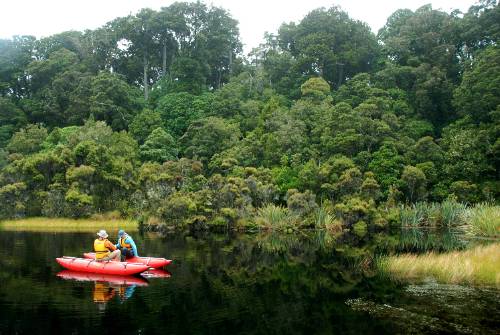
Rapid deforestation of South Island, New Zealand
 The focus of this project is to better understand how climate and human activities
interact to influence fire regimes in different settings. New Zealand offers the unique
opportunity to examine dramatic changes to fire and vegetation over large landscapes
in the relative absence of climate change. This research will provide insights into
the natural resilience of different ecosystems to disturbance and how human impacts
and climate may interact to alter ecosystems in the future.
The focus of this project is to better understand how climate and human activities
interact to influence fire regimes in different settings. New Zealand offers the unique
opportunity to examine dramatic changes to fire and vegetation over large landscapes
in the relative absence of climate change. This research will provide insights into
the natural resilience of different ecosystems to disturbance and how human impacts
and climate may interact to alter ecosystems in the future.
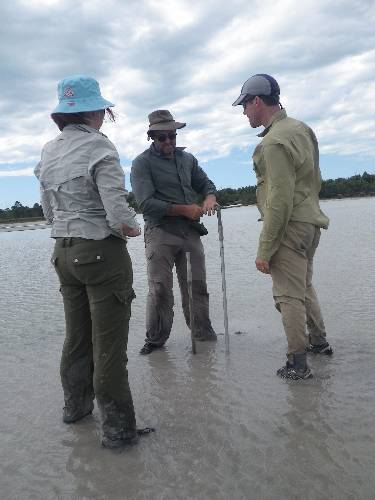
Human impacts, Flinders Island, Tasmania
 For thousands of years low sea levels allowed humans to migrate between Flinders Island,
Tasmania and mainland Australia. As sea levels began to rise 14 thousand years ago
humans became isolated on Flinders Island and an absence of archeological evidence
after ~4,500 years ago suggests humans no longer occupied the island. With this unique
history of human settlement, we will use past records of climate, vegetation and fire
to disentangle the relative influence of climate and humans in shaping fire regimes
and vegetation in forests that vary between those dominated by species well adapted
to fire (Eucalypt. spp) and (Callitris and Causurina spp.).
For thousands of years low sea levels allowed humans to migrate between Flinders Island,
Tasmania and mainland Australia. As sea levels began to rise 14 thousand years ago
humans became isolated on Flinders Island and an absence of archeological evidence
after ~4,500 years ago suggests humans no longer occupied the island. With this unique
history of human settlement, we will use past records of climate, vegetation and fire
to disentangle the relative influence of climate and humans in shaping fire regimes
and vegetation in forests that vary between those dominated by species well adapted
to fire (Eucalypt. spp) and (Callitris and Causurina spp.).
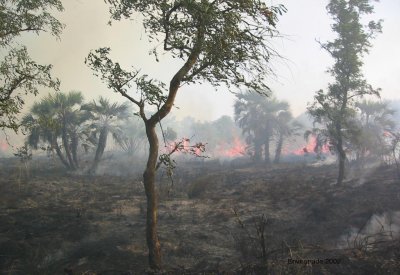
Fire in Miombo woodlands of southern Africa
Research supported by the National Geographic Society Committee for Research and Exploration
![]() Fire is a key ecological agent in the savanna biome, burning millions of square kilometers
of savanna each year. Fire plays an important role in maintaining seasonally dry,
species-rich, tropical savanna woodlands (Miombo woodlands) that are the dominant
vegetation type across southern Africa yet the role of fire maintaining these woodlands
is still poorly understood. Using detailed analyses of pollen, charcoal and geochemical
elements from lake sediment records, our research will be used to reconstruct vegetation
and fire histories for central Mozambique. This research will provide historical context
for management and conservation of Miombo woodlands by identifying long-term trends
in the abundance of Miombo woodland species and comparing these trends with variations
in climate and fire.
Fire is a key ecological agent in the savanna biome, burning millions of square kilometers
of savanna each year. Fire plays an important role in maintaining seasonally dry,
species-rich, tropical savanna woodlands (Miombo woodlands) that are the dominant
vegetation type across southern Africa yet the role of fire maintaining these woodlands
is still poorly understood. Using detailed analyses of pollen, charcoal and geochemical
elements from lake sediment records, our research will be used to reconstruct vegetation
and fire histories for central Mozambique. This research will provide historical context
for management and conservation of Miombo woodlands by identifying long-term trends
in the abundance of Miombo woodland species and comparing these trends with variations
in climate and fire.
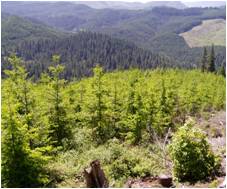
Biodiversity potential in the northwestern US
![]() Managing forest lands for biodiversity is a common goal in the public and private
forests of the Pacific Northwest and is typically achieved through harvests that result
in an array of vegetation structural conditions that provide suitable habitat for
a number of species. The primary aim of this research is to better understand how
species respond to both local and landscape-scale forest structural conditions in
landscapes with different levels of productivity. Results will be used to guide management
of forests across the northwestern US.
Managing forest lands for biodiversity is a common goal in the public and private
forests of the Pacific Northwest and is typically achieved through harvests that result
in an array of vegetation structural conditions that provide suitable habitat for
a number of species. The primary aim of this research is to better understand how
species respond to both local and landscape-scale forest structural conditions in
landscapes with different levels of productivity. Results will be used to guide management
of forests across the northwestern US.


